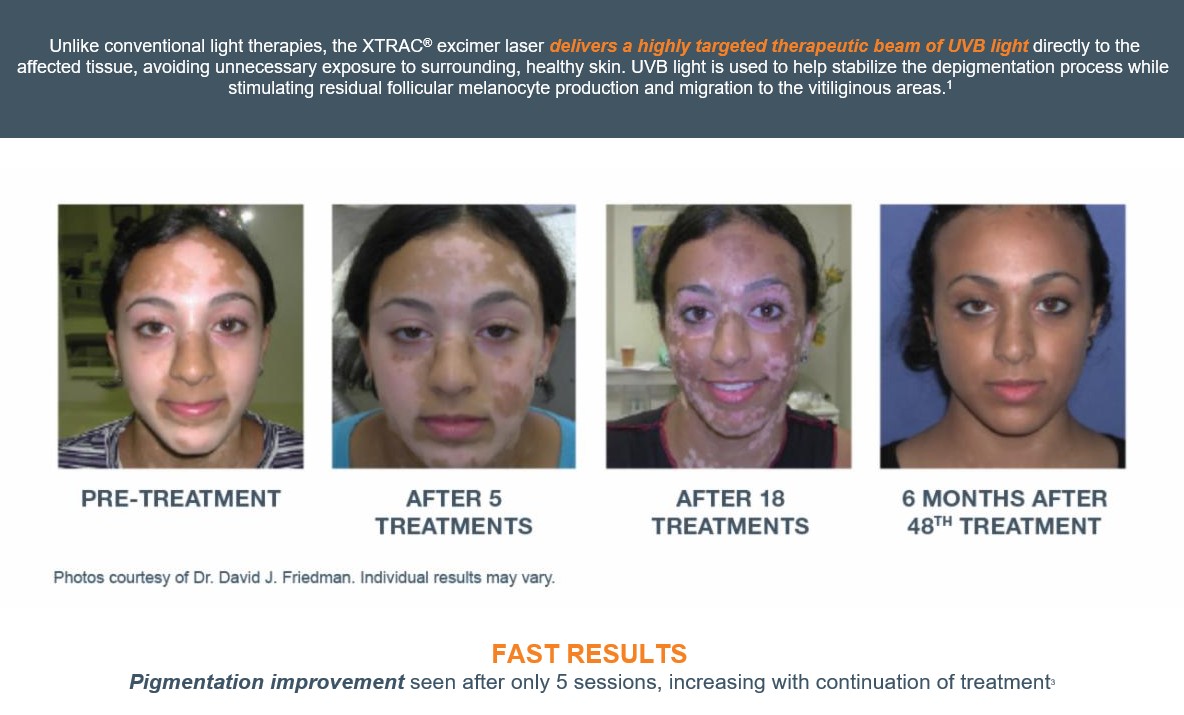Vitiligo
 Vitiligo is a condition that affects approximately one percent of the world’s population, with approximately five million Americans dealing with this skin disorder. It is characterized by white spots on the skin caused by the loss of pigment producing cells called melanocytes. It can affect any area of the skin, but most commonly, it affects the face, the hands and fingers, and the genital area.
Vitiligo is a condition that affects approximately one percent of the world’s population, with approximately five million Americans dealing with this skin disorder. It is characterized by white spots on the skin caused by the loss of pigment producing cells called melanocytes. It can affect any area of the skin, but most commonly, it affects the face, the hands and fingers, and the genital area.
Vitiligo Causes and Risk Factors
Although the causes of vitiligo are not fully understood, it is believed to be a combination of immunological and genetic factors. This autoimmune disease attacks melanocytes resulting in the skin losing its color. It can affect men and women of all ethnicities and can run in families.
Signs of Vitiligo
The most common symptom is the rapid loss of color in one or several specific patches. This may occur anywhere on the body. Areas that receive regular sun exposure, such as the face, arms, and legs, are especially susceptible. These patches tend to form one of three patterns:
- Generalized – Depigmented patches develop on both sides of the body symmetrically. This is the most common pattern.
- Segmental – Depigmentation only occurs on one side of the body.
- Focal – Only one, or a selected few, areas are affected.
Focal and segmental patterns generally do not spread but generalized patterns may. For some people, the white patches spread slowly over many years. In other cases, they spread rapidly or not at all. It often cycles through periods of stability followed by periods of increasing pigment loss. What causes or prevents the spread of vitiligo is not known, but some patients have reported an apparent connection to periods of emotional stress or physical activity. In addition to skin depigmentation, people with vitiligo may experience prematurely graying hair.
Treatment Options
The first and simplest option is topical therapy with either topical steroids and/or tacrolimus or pimecrolimus. These are generally safe and can be effective for localized vitiligo. If that fails, narrowband ultraviolet light can be used. It is often effective, but it requires visits two to three times per week. Lastly, in more difficult cases, a new and effective technology, the XTRAC Excimer laser, can be used with good success. This, too, requires two to three visits per week, but results are seen faster than with other methods.

If you would like to schedule an appointment at the Center For Dermatology Cosmetic And Laser Surgery, please call our Fremont office at 510-797-4111 or our Milpitas office at 408-957-7676
For more information, visit the National Vitiligo Foundation Inc. at http://www.mynvfi.org/

